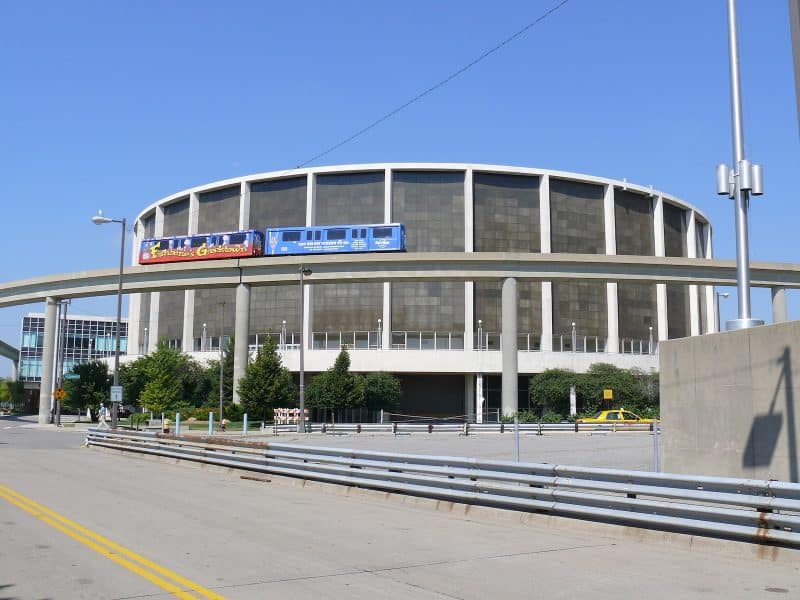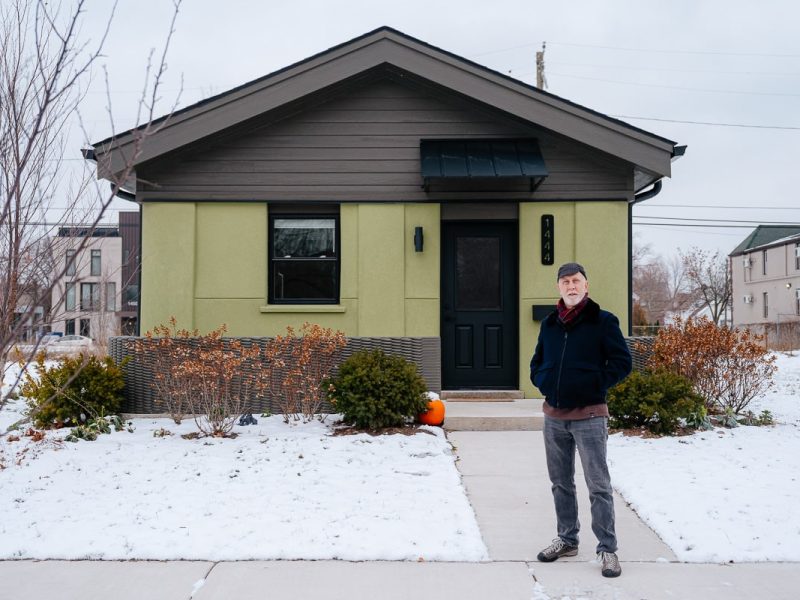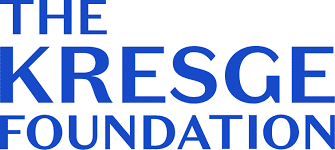Resilient Neighborhoods: Debbie Fisher of HVR talks sustainability, innovation in NW Detroit
The director of a northwest Detroit community development nonprofit talks about integrating cutting-edge green and sustainable technology into its development work.
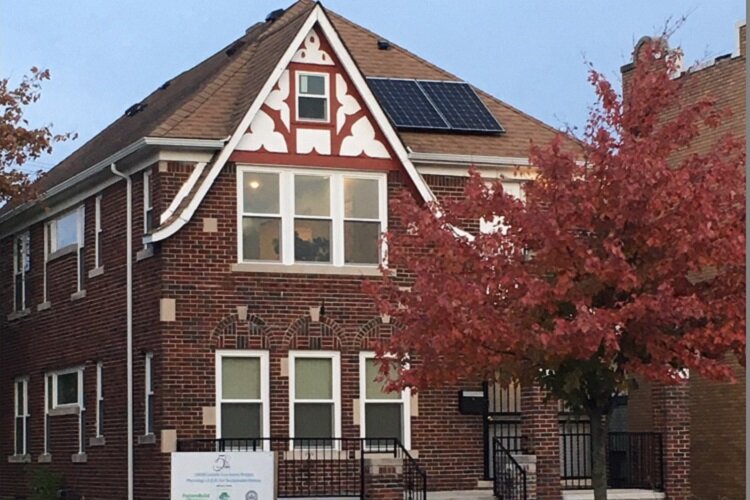
This is part of a series of Q&A interviews with Detroit nonprofit directors connected to our Resilient Neighborhoods series. Debbie Fisher is the executive director of HOPE Village Revitalization, which serves the HOPE Village neighborhood in northwest Detroit.
Model D: Could you tell us a little about Hope Village Revitalization?
Debbie Fisher: We started in 2002 as a wholly-owned subsidiary of Focus: HOPE to work on housing and community development issues in the neighborhood and to work together with community residents to address the forces of systemic racism
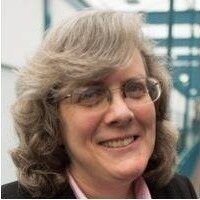
and poverty that have heavily impacted the neighborhood. We spun off from Focus: HOPE in 2019 to have a community-controlled board that would be focused solely on the neighborhood. We’re a community development corporation, and we focus on three things that are related to the community’s vision of becoming an equitable sustainable community with a high quality of life for all: sustainable affordable housing, providing access to fresh healthy local food [to residents], and health and community advocacy.
Model D: Tell us more about your vision for sustainability. What does sustainability mean in the context of the work you’re doing?
DF: There are three different angles that we see it addressing. One is the issue of eliminating energy poverty. Almost all of the structures [in the neighborhood] were built before 1950. They’re not well-insulated and they have extremely high heating costs, so folks routinely have $300 to $400 utility bills. That changes the household budget, and really impacts pretty substantially what folks can do with the available money they have. Another issue is ensuring equitable access to clean energy and the technology of the future, while also addressing resiliency in flooding. Then, we add to the sustainability piece the aspect of including health outcomes for the neighborhood. Sustainability is the big word, but we do think it really encompasses almost all of what we do on a daily basis. And we believe that equity for our neighborhoods and for neighborhoods like ours means not being left behind in this area of clean and green energy, in particular. And having access to the capital infrastructure that is needed in order to thrive and survive in the future.
Model D: How did you first get interested in sustainability?
DF: It came about very organically for us. It really grew out of the year-and-a-half strategic planning process that the community undertook in 2016, that really tried to look at 20-30 years from now. where this neighborhood had to be to be a neighborhood with a high quality of life for all. Sustainability kind of grew out of that and then as we decided to explore different pieces [of that], people were saying: “What can we do about the energy bills? What can we do about the flooding on our streets?” And all of that kind of tied back to the focus that we have now.
Model D: What can you tell us about the La Salle Eco-Demonstration Home?
DF: On a day-to-day basis, the La Salle Eco-Demonstration home serves as our offices and as a neighborhood center. It operates on a pretty important corner of the neighborhood and it gives us the ability to interact with a lot of people who happen to be walking and driving by. But it’s really much more than [that]. It provides a tangible example of energy efficiency and clean energy as well as healthy home construction and water conservation. As people come into the house and as we host meetings, they can come in and see, touch, and feel different aspects of what [green and sustainable housing elements] might look like and see if any of them make sense for their own homes. We give out some small-scale healthy home kits that contain everything from things that help with water conservation to LED light bulbs to insulating types of things, so they can see what impact they make. Or if you put in a double flush toilet, it actually works pretty well. A lot of times people haven’t come across that kind of technology before and we are able to say “75 cents for a water aerator really isn’t a big expense, but it can really change water usage in your house.” We have a ton of people coming by to say, “You’ve got solar on your roof. We really want to figure out what it takes to do it? What’s it like? How does it work?” And we can take them down to the basement and show them the meter running backwards basically. Our electricity bills are the only bills we get, and for that first-floor unit more than 100 % of the energy is covered by the solar [panels] through at least eight months of the year, so our energy bills are 13 dollars a month. which is a gamechanger.
Model D Can you tell us more about the individual elements there?
DF: We really use the LEED framework, Leadership in Energy and Environmental Design. It’s a national and global process you go through to look at different elements of a home and provide a framework for being healthy and highly efficient and cost-saving as a green building. We were fortunate enough to get assistance from a LEED certifier who has worked with us in every stage along the way, and he’s just finishing up the paperwork for us to be LEED-certified. We’ve incorporated some of the cutting-edge technologies and really been thoughtful in the building systems. We focused on three [parts]. One, which we already talked about is energy. We did a number of things around energy like solar, but we also heavily insulated the home. We have R-31 insulation in a lot of the walls, as well as in the attic and basement. We used the closed-cell spray foam, which hardens onto the wood, so it provides additional structural support. And we also use heat pumps, which is a relatively new technology, but they provide heating and cooling and are incredibly energy efficient.
The second thing we focused on was health. A lot of times when you put materials in the home you don’t realize the health impact they have. [Like] the paint you put on the walls, that smell that you get from the paint is a VOC (Volatile Organic Compounds) smell and it’s very bad for you. You shouldn’t be exposed to it for the long term. It’s a carcinogen. We use non-VOC paints. We’re really encouraging folks to try those out. And we’ve used recycled bamboo materials for our floors. We also put in a whole home ventilator which was a real miracle, because we didn’t realize COVID was coming. This ventilator turns over the air in the house every 24 hours and we have MERV 13 air filters, which provide a really good level of filtering. Whole-home ventilators are not that expensive to install, and they are something that could really change people’s health in the long term.
Then the third area we focused on was water conservation. We have two-flush toilets, but we also have water sense fixtures throughout. And we have rain gardens in the front and the back that basically take all of our runoff and keep it on-site but also create a really nice visual and beautiful gardens for birds and insects.
Model D: What are you doing to incorporate these types of green and sustainable elements into your affordable housing and home renovation efforts?
DF: We are trying to use these new technologies in everything we do. We’re working through the DTE energy efficiency program to make sure that homeowners and tenants alike in the neighborhood have access to energy efficiency improvements and highly efficient furnaces and water heaters. So far, 71 homes in the neighborhood have been able to take advantage of those types of improvements. We’re also working through MHSDA (Michigan State Housing Development Authority) on exterior improvements that help with the water issues, particularly fixing gutter systems and trying to make sure that the downspout from the gutter is not creating a flooding issue for the home.
And we’ve been working with Soulardarity on figuring out how to get a group buy for neighborhood residents. The Grow Solar Highland Park-Detroit has been a collaboration that lets our residents take advantage of the group buy that Soulardarity started, as well as a number of neighborhood residents got quotes on what it would take for them to get solar with some assistance grant funding through Patronicity that Soulardarity put together. That’s been a great partnership for us. Then a big picture vision that we are aiming at in the future is to take a number of vacant apartment buildings on the street that we are located on and convert them into highly energy-efficient buildings with green technology and solar on the roofs. but also to build in an element of renter equity, so it deals with building stability for renters that can stay in place for 5-10 years and build equity in the apartment building that they live in. We’re working hard to bring that to fruition in the next year or two.
Model D: What sort of impact do you hope these initiatives have on the neighborhood?
DF: We hope that every resident will have access to clean energy and energy efficiency improvements in their homes. So we’re talking about 100 percent of residents whether they are homeowners or tenants that will be the case within the next five years. That’s a pretty ambitious goal, but we think it’s doable.
Model D: Anything else you want our readers to know?
DF: Being an Eco-D neighborhood has been really critical to our work. partly through our relationships with Ecoworks, who have been a thought partner but also a very practical on-the-ground partner for a lot of our work. And it’s connected us with a lot of other Eco-D neighborhoods across the city. The Eco-D idea is really built around equity, sustainability, and resilience. which is a perfect fit for us and the neighborhood. We’re also working with other Detroit 21 projects, collaborating on a couple. of things including advocacy around sustainability issues.
Model D: Can you explain a little more about what it means to be an Eco-D neighborhood?
DF: It’s really an aspirational piece that we are looking to become a neighborhood that’s equitable and sustainable, so exactly what our sort of neighborhood vision is what Eco-D neighborhoods are. So we tried to incorporate. increased coverage in the neighborhood, dealing with issues like water and how do we look to the future for that, so it’s almost like we signed up to be part of the future by being an Eco-D neighborhood.
This interview has been edited for length and clarity.
Resilient Neighborhoods is a reporting and engagement series that examines how Detroit residents and community development organizations are working together to strengthen local neighborhoods. It’s made possible with funding from the Kresge Foundation.

